2016 Evil Following X1
(discontinued)
| Where To Buy | |||
|---|---|---|---|
Free shipping on orders over $50 (continental U.S. only).
International shipping available. Some exclusions apply. |
|||
Free shipping on orders over $50 (continental U.S. only).
International shipping available. Some exclusions apply. |
|||
Reviewed by Brandon Turman and Steve Wentz // Photos by Lear Miller
The Following is an aggressive 29er created to push the boundaries of the big wheel. But with just 120mm of rear travel there's not a whole lot to work with, right? Turns out the carefully considered combination of big wheels, good components, dialed suspension, and progressive geometry allow you to do things typically reserved for a longer travel bike. The full carbon rig builds off the success of Evil's previous models while seeing a number of key updates that will continue to influence future designs. We straddled the head-turner with high hopes during the 2016 Vital MTB Test Sessions.

Highlights
- Carbon frame
- 29-inch wheels
- 120mm (4.7-inches) of rear wheel travel // 130mm (5.1-inches) fork travel
- Delta System suspension
- Adjustable geometry via flip chips
- Tapered headtube
- Internal cable routing
- Water bottle mount in main triangle
- Rubber chainstay, seat stay, and downtube guards
- Dual row angular contact bearings
- Post mount rear disc brake (max 185mm rotor)
- Front derailleur direct mount
- Press fit 92 bottom bracket with ISCG05 mounts
- 142mm rear spacing with 12mm through axle
- Measured weight (size medium, no pedals): 28.8-pounds (13.1kg)
- MSRP $4,999 USD
At the heart of The Following is Dave Weagle's wild-looking Delta System suspension, short for Dave's Extra Legitimate Travel Apparatus. The linkage driven single-pivot design uses very compact links to create a dual progressive leverage rate curve designed to "achieve a high degree of suppleness early in the travel, a very predictable high traction stage through the middle, and a bottomless ramp at the end of the travel." Part of the linkage can be flipped around for a geometry adjustment without altering the leverage or wheel rate.

Compared to prior Evil models, The Following brings improved lateral stiffness and new links with forged bosses to simplify shock installation and geometry adjustments. The swingarm is attached through the seat tube using a 15mm pivot axle, and dual row angular contact bearings keep things in check. Access to shock damping adjustments is pretty good, though you're limited to just a few shock options due to the snug mounting area. The Following is shipped with a custom-tuned 184x44mm (7.25x1.75-inch) RockShox Monarch RT3 Debonair shock with a high volume eyelet.
Evil's carbon construction is one area you might wonder about based on a somewhat muddy past. With a number of cracked downhill bikes and ridiculously long replacement times haunting their history, we're pleased to report that those days are rapidly disappearing from the rearview mirror. The Following uses uni-directional carbon with a one-piece molded construction "from one of the best factories in the business" (not the one that gave them so much trouble).
A wide, boxy headtube and downtube help stiffen the front end, and the top tube narrows as it approaches the seat tube for a clean look. Peering inside the rear triangle reveals unique triangular profile chainstays which we assume were cleverly designed to add rigidity to the back end.

The frame is protected by integrated rubber guards on the chainstay, seat stay, and downtube. Evil also put a metal plate inside the chainstay area to prevent further damage from the chain.
We always found it a little odd that a company based in the seemingly-always-wet Pacific North West ever produced frames with mud clearance issues, but that's all gone on The Following. The stock 2.3-inch Maxxis tires mounted to 30mm wide rims have about 7mm (0.3-inches) of room for the muck, which is pretty generous for a 29er with very short 432mm (17.0-inch) chainstays. Evil was able to pull off the snug rear end despite lacking the new Boost 148mm rear axle standard. The 12x142mm rear axle requires an allen key for removal and installation, keeping the rear width pretty minimal for tight squeezes through rocks and vegetation.
Cable routing is very clean with no kinks, odd bends, or rattle on the trail. It's simple and straightforward. The rear brake remains entirely external for easy maintenance, while the dropper post, rear derailleur, and optional front derailleur go internal for at least part of their path.
The Following comes in X01 and X1 build kits priced at $6,599 and $4,999 US, respectively. You can also go custom with a $2,599 frame and shock combo. We tested the X1 build.
Geometry

We received the bike in the stock "high" geometry setting, and given the extremely rocky terrain we were riding decided it best to switch to the "low" setting to see what the bike was really capable of. Though it seems simple in concept, the process involves removing several bolts while fumbling with flips chips and doing your best not to drop anything. While still a hassle, this is actually an improvement over previous models. The hardware is now captured, the dog bone links insert nicely into the bearings, etc, so Evil is making improvements. We suggest making the adjustment with the bike in a stand and rear wheel removed to make it a little easier. Supporting the rear triangle during the process is also a big help.
In the low setting with a 130mm fork, our size medium test bike featured a 419mm (16.5-inch) reach, measured 335mm (13.2-inch) bottom bracket height, and 67.2-degree head angle. With exception to the slightly short reach measurement, all of these numbers fall close to those used by several brands chasing the aggressive short travel 29er segment, but a tad slacker. We chose to use Evil's suggested sizing for our 5'8" and 5'10" (1.73 and 1.78m) tall testers.
While the bike is designed around a 120 or 130mm (4.7 or 5.1-inch) travel fork, Evil doesn't hesitate when saying that you're welcome to bump up to 140mm (5.5-inches). The longer fork will slacken the head angle out to 66.4-degrees in the low setting and raise the bottom bracket slightly. Those wanting to go this route may want to opt for a larger frame than recommended on Evil's website due to reach measurement reduction as the front end rises.
On The Trail
Now for the fun part - putting this thing to the test. The trails on Phoenix's South Mountain are not meant for the faint of heart, and they dish up a dose of rowdiness and exposure that make even Pros think twice. Curious to see if The Following could tackle the same terrain as something with more travel and smaller wheels, we gave it the opportunity to strut its stuff on National, Geronimo, and 32nd Street trails. From high speed rock blasting to tight techy maneuvers and loose shale fall line riding, The Following saw it all. We also took it to some sweet jumps for good measure.

Considering the shock is so buried inside the frame, it's pretty difficult to see the markings on the RockShox Monarch RT3 Debonair, making it difficult to setup the traditional way with an o-ring. To make things a little easier, Evil provides a sag indicator that allows you to find the suggested 30% sag point relatively easily. Simply unweight the bike, rotate the indicator forward, sit on the saddle, dismount, then check to see if the indicator has moved just enough to read the 30% marking. Adjust air pressure and repeat as needed. If available, a high pressure shock pump is nice to have as the bike's high leverage rate combined with a Debonair can means you'll likely need many, many psis.
With the introduction of several bikes like The Following, the days of 29ers feeling like unstable, weebly wobbly circus acts seem as though they're pretty much over. This new breed of bike blurs a sense of short travel efficiency with the ability to take on rough terrain relatively unfazed. Despite similar angles and specifications, it's still surprising how different each of these new bikes can ride, however. For example, we found the Pivot Mach 429 Trail and Trek Fuel EX 29 lean toward the pedal-friendly side, while the Transition Smuggler and Banshee Phantom seem more able to tackle rougher trails. As one of our testers put it after ploughing through a section of rocks, Evil's take lands at the "It's not a 29er for efficiency, it's a 29er for mowing over shit" end of the spectrum.
The bike's ability to monster truck and maintain momentum is one of its biggest strong suits, handling incredibly well in terrain normally reserved for longer travel bikes. If someone had told us that we were on a 150mm (5.9-inch) travel bike as we mashed though South Mountain's relentless rock fields we'd almost believe them. It's surprising how capable it truly is, and you get the sense that this ride isn't ever going to do you wrong. It's balanced front to back, the large wheels help you skip across the rough bits unscathed, you've got good, supportive tires with ample traction, and the slack geometry is there to help you out as well. At no point did we ever feel as though we were getting hung up on the front end.
Rough landings feel very planted, and it's here that one can really appreciate how the suspension ramps up. There's a soft, supple initial feel that transitions into a firm, yet smooth, deep, supportive end stroke. We were never worried about coming up short as the bike just took it in stride and never bucked. On most of these new school 29ers you know where the bottom is, but on the Evil you lose that sensation. It's one of the most progressive bikes like this on the market and it shows, even without volume spacers in the shock.
We applaud The Following for getting us out of would-be-wild situations that we find "fun" - like airing into piles of rocks, trying stupid lines, drifting through loose shale, or entering a turn at an angle the textbooks say shouldn't be possible. The only instance we felt out of our comfort zone was when we were exhausted while nearing the end of a continuous descent attempt on Geronimo, a trail most riders typically tackle with a full-fledged downhill bike. On this occasion several large successive hits exposed the limits of the short travel design. Big, hard landings (aka hucks to flat) can be a bit taxing. In these situations you need to be more on it than on a longer travel bike, as the feedback coming through the bars and pedals is more defined, but still manageable.
With all this talk of "rough this" and "rowdy that," what about the fast flowy stuff? Turns out The Following has a fondness for high speeds in jumpy, pumpy, fun terrain as well, and can feel like a short travel slalom bike at times. While many smaller bikes are "playful" with a boingy attitude, this one strikes a bit more of a balance - playful when it needs to be, but stabile, quiet, and calm when the occasion calls for it. That's the beauty of 29-inch wheels, proper geometry, and a progressive suspension design. It doesn't have an overly snappy feel, but those short chainstays really make it easy to get the front end up at a moment's notice which helps in this regard. They also help the bike gain a bit of mobility and nimbleness that 29ers don't always have. That said, you do have to be deliberate about leaning the bike over in turns. It will just keep mowing over stuff unless you forcibly tip it over.
The second you stand up and start to pump the terrain it redefines your appreciation of speed, gaining a lot of it with each big input. This quality is one of the raddest things about The Following, and it's something the vast majority of longer travel 27.5 bikes fail to provide. You pump, it pumps. You hop, it hops. You don't just sit down in that travel, and it's surprisingly quick to get after it. You can remain very active in the driver's seat without it holding you down or muting your movements, and when you push into it you always get your desired outcome.
After piloting The Following into a particularly rough landing followed by a tight turn with a jump to another berm, we noted the suspension's great ability to quickly recover from just about everything - the hard initial impact, several square-edged bumps on the landing, braking and chatter entering the corner, and then the compression in the turn before pulling back for the jump. On many other bikes this move was more difficult due to the suspension packing up. Jumping is extremely predictable and enjoyable, even if the big wheels do act like sails in the wind.

Looking the bike's specs over you might question the absence of the newer Boost axle standard. In our experience the bike felt plenty stout without it. In fact it was the stiffest feeling of all 29ers we rode (even some Boost models), and the stays are already insanely short for a 29er. If anything, Boost might bring some additional mud clearance which could be rad.
Pointed uphill the bike has an efficient feel in every gear combo, although with this build kit it's more akin to a diesel truck than a dragster coming off the start line. There's no sense of bobbing or wasted energy, and when you sprint it gets up and goes, but it takes moment to do so and doesn't feel super springy at the pedals. Compared to the Pivot Mach 429 Trail and Trek Fuel EX 29 we rode in the days prior, the Evil needs a little more effort and pre-planning on climbs. Big bunny-hop style moves require that you push into the suspension for the desired response, but upon landing it feels very stable and small pedal inputs translate into forward momentum quickly enough to keep you cruising. Pedaling over techy terrain is a treat as it never really tugs at your feet, nor does the suspension extend drastically as you power over the top of short bursty climbs. We left the shock's compression damping open all the time, preferring to let the suspension do its job as we scaled ledgy climb after ledgy climb.
While Evil lists the seat angle at 74.3-degrees, realize that this is the effective (and somewhat subjective) seat tube angle. Riders with long legs may notice that the actual seat tube angle puts them over the back wheel, which certainly eases getting the front end up, but can make keeping the front end down on steep uphill grunts a chore. Even so, we experienced no issues with the front end pushing in the low setting with a 130mm fork installed. The bike's bottom bracket height seems perfectly reasonable, and pedal strikes were never an issue.
Build Kit
Evil's X1 build kit does an excellent job of mixing top performers with high value workhorses. The $4,999 price point seems very reasonable given the components and carbon frame. Everything seems to be of high quality, and there are no parts we feel the need to swap asap. Note that The Following ships as a frame with a parts kit, meaning it requires more assembly than most bikes.

One notable component that immediately makes the bike stand out is the 40mm (1.6-inch) high rise handlebar. At the same time the bike has a very short headtube. This helps put you in the proper position with fewer spacers, though adjustability is a bit limited if you prefer a low front end. You're looking at a decently wide 750mm (29.5-inch) Easton Haven bar coupled with a 40mm stem, both in the larger 35mm diameter size. While shorter stems have become increasingly popular, it's still rare that bikes come with something shorter than 50mm - a nod to the benefits of a long reach and short stem combo pioneered by Mondraker. This bar and stem is perfectly aligned with the bike's rowdy disposition in mind, though some may find a slightly longer stem can improve handling in some instances. That, or opt for a larger frame and keep the little guy in place, especially if you're between sizes.
While some company logos make for great grips, Evil's logo isn't one of them. We dug the flange, though, as it's low profile enough to not interfere with controls while adding to the secure feel of cockpit.
As we've come to expect, the RockShox Pike RCT3 fork was a solid performer. We had one issue early on where one of the pre-installed Bottomless Token volume spacers came loose, creating a hideous rattle inside the fork. This was easily remedied back at the trailhead, however. The fork includes three Tokens stock, and was aired up about 5psi higher than recommended to achieve good bottom-out resistance. An alternative would be to add another Token and remove a small amount of pressure to help the bike gain better small bump compliance. The included fork is at 130mm of travel, but could be extended to 140mm to make the bike more capable with some internal part swaps.
Our test bike came equipped with dual 2.3-inch Maxxis Minion DHF 3C EXO tires, which have long been regarded as some of the most predictable performers by the big bike crowd. We noted plenty of cornering bite with no odd transition zone, though braking performance could be better. Evil lists the rear tire as a 2.3-inch Maxxis Minion DHR II EXO on their website which would help in this regard. Evil's bike photos show a Maxxis Ardent though, so who knows what you'll actually receive...
The tires were paired with Easton Heist 30 (Arc) rims laced to Easton X5 straight pull hubs using straight gauge spokes and long brass nipples, which will likely withstand tunes for years to come. Spoke tension was excellent even after lots of hard riding, though the rear wheel was slightly out of true. The 30mm internal width rims give the Maxxis tires a more stable feel through rough terrain, which allows you to open it up a bit more. We could also reduce our typical pressures by a few psi which helped with small bump performance. The wider rims do remove a bit of the fun, springy feel that Maxxis EXO tires often exhibit, however, which can be a blast for experienced riders and add to a bike's playful feel. Swapping from tubes to tubeless on the Heist 30 wheelset was a painless switch as the rims come pre-taped and ready to roll.
We should note that Evil's website lists Race Face Aeffect wheels on this build, which have a narrower rim (23mm vs 30mm), require an extra kit for tubeless conversion, and are heavier than the Heists (1,900g vs 1,790g). Engagement is tied between both options at 21 points, which is an area for improvement, especially on technical terrain. Given a choice, we'd opt for the Heist 30 wheels as they add a lot to the capability and smash-over-anything feel of the bike like we described above.

SRAM's Guide R brakes with dual 180mm rotors provided plenty of stopping power for the large wheels, though considering the speeds and diameter of the wheels it wouldn't be out of the question to slap a 200mm up front (you're limited to 185mm in the rear). Modulation was good, there was no howling, lever feel was excellent, we experienced no fade, and there's always more power waiting if you squeeze harder. We really enjoy the clean look of the cockpit thanks to the 1X drivetrain and SRAM's Matchmaker mounts.
The mix of 11-speed SRAM X1 parts, Race Face Turbine crankset, and a 30-tooth narrow/wide chainring yielded a drivetrain that was smooth and quiet. The range provided by the 10-42 tooth cassette was sufficient for our time at South Mountain. We'd suggest the addition of a top guide for those riding consistently rough terrain.
Given the slack actual seat tube angle, the 125mm (4.9-inch) travel RockShox Reverb Stealth seatpost could be felt occasionally binding on the way down. We'd also love to see the dropper lever mounted under the bar instead of over it.
Long Term Durability
After washing the bike we noted that water can easily enter the frame through the internal routing hole for the optional front derailleur, so consider covering it up if it's a concern. The PF92 bottom bracket never creaked during our test, but it certainly doesn't need encouragement from water.
Looking the frame over, the number of moving parts on the Delta System may prompt some concern as well. We suggest lightly greasing the links and bolts when changing the geometry setting, and again after sustained periods of rain or dust. Evil prints torque specs on the bolts for your convenience, and everything is accessible with the cranks installed. Just two bearing sizes are used throughout the bike to make maintenance easier.
Finally, inspired by the bike's pure huckability, one of our testers managed to send it hard enough that the rear tire buzzed the seat tube at bottom out, which indicates a potential clearance issue with larger tires. As far as we can tell this only occurred one time.
Evil backs the frame with a three year limited warranty and lifetime crash replacement program.

What's The Bottom Line?
We weren't joking when we said Evil's The Following isn't a 29er for efficiency, it's a 29er for mowing over shit. This distinction sets it apart from other bikes with similar amounts of travel and geometry numbers. Skilled riders willing to give up a little control to the bike will be surprised with its consistency, momentum, and ability to recover from typically wild on-trail scenarios. Evil's progressive Delta System suspension works wonders in this application, providing a bottomless feel that allows you to let loose on more sections. While not our first choice for all day outings, this is a bike you can throw around and have fun on, and that's what we live for. Embrace it. Ride it hard. Let it drift a bit. Drop a foot in the turns. Jump stuff and pull up at every chance...
The Following is very exciting to ride, an excellent execution of the new school 29er concept, and a worthy winner of Vital MTB's Bike of the Year Shreddy Award.
Visit www.evil-bikes.com for more details.
Vital MTB Rating
- Climbing: 3 stars - Good
- Descending: 4.5 stars - Outstanding
- Fun Factor: 4.5 stars - Outstanding
- Value: 4 stars - Excellent
- Overall Impression: 4.5 stars - Outstanding
Bonus Gallery: 21 photos of the 2016 Evil The Following X1 up close and in action
About The Reviewers
Brandon Turman - Age: 29 // Years Riding MTB: 15 // Height: 5'10" (1.78m) // Weight: 175-pounds (79.4kg)
"I like to have fun, pop off the bonus lines on the sides of the trail, get aggressive when I feel in tune with a bike, and really mash on the pedals and open it up when pointed downhill." Formerly a Mechanical Engineer and Pro downhill racer, Brandon brings a unique perspective to the testing game as Vital MTB's resident product guy. He has on-trail familiarity with nearly every new innovation in our sport from the past 5-6 years and a really good feel for what’s what.
Steve Wentz - Age: 31 // Years Riding MTB: 20 // Height: 5'8" (1.73m) // Weight: 180-pounds (81.6kg)
"Despite what it looks like, I'm really precise and calculated, which I'm trying to get away from. I'm trying to drop my heels more and just let it go." Steve is able to set up a bike close to perfectly within minutes, ride at close to 100% on new trails and replicate what he did that first time over and over. He's been racing Pro DH for 13+ years including World Cups, routinely tests out prototype products, and can squish a bike harder than anyone else we know. Today he builds some of the best trails in the world.

About Test Sessions
Four years ago Vital MTB set out to bring you the most honest, unbiased reviews you'll find anywhere. That tradition continues today as we ride 2016's most exciting trail, all-mountain, and enduro bikes in Phoenix, Arizona. Reviews can be accessed 24/7 in our Product Guide. Test Sessions was made possible with the help of Rage Cycles. Tester gear provided by Troy Lee Designs, Royal Racing, Smith, Fox Racing, Race Face, Easton, and Source.
Specifications
Rear: Maxxis Minion DHR II, DC EXO, 29" x 2.30", Tubeless Ready
| Where To Buy | |||
|---|---|---|---|
Free shipping on orders over $50 (continental U.S. only).
International shipping available. Some exclusions apply. |
|||
Free shipping on orders over $50 (continental U.S. only).
International shipping available. Some exclusions apply. |
|||












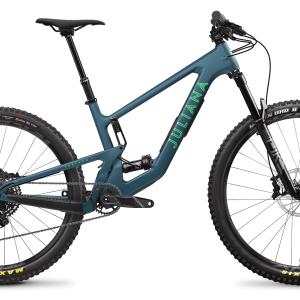
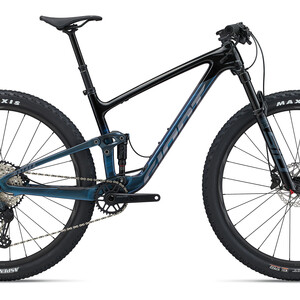

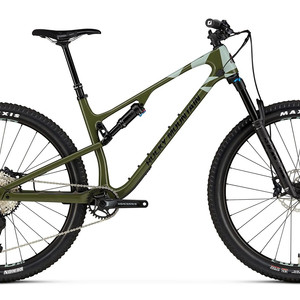



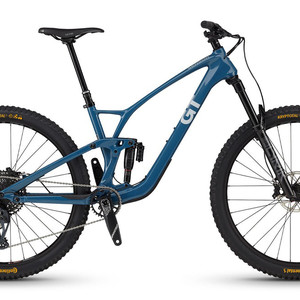



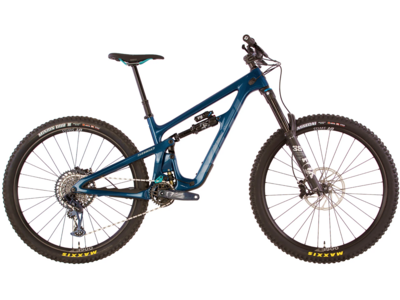




6 comments
Post a reply to: 2016 Test Sessions: Evil The Following X1